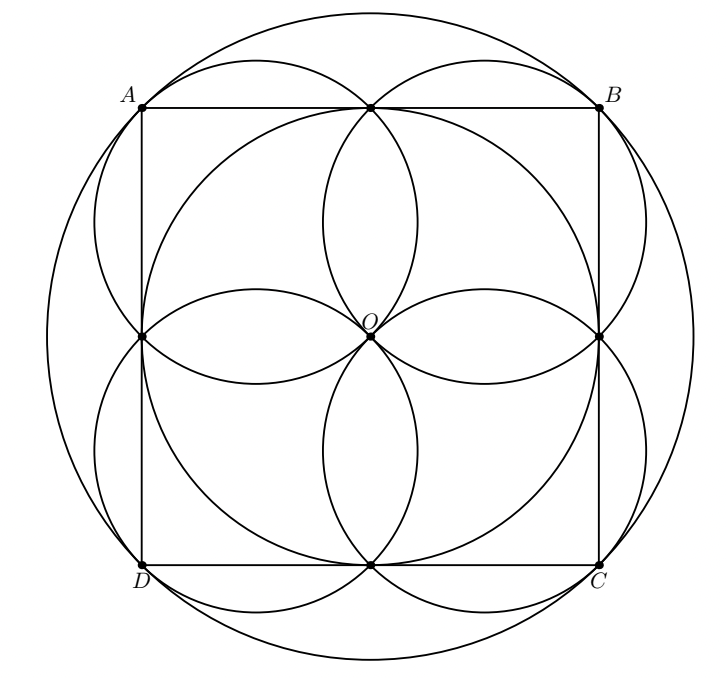Problem. Several circles are drawn on the plane and all points of their intersection or touching are marked. For which $n$ it is possible that each circle contains exactly $n$ marked points and each point belongs to exactly $n$ circles?
Examples for $n=2,3$ are trivial. For $n=4$ and $5$ there only two known examples on the figures below (we apply an inversion with a center not lying on these lines to obtain the required configurations). Are there examples for $n>5$ and other examples for $n=4,5$?
UPD $n=5$ example arises from stereographic projection of $12$ vertices of an icosahedron and $12$ circles passing through any $5$ vertices incident to the same vertex. Ilya Bogdanov noticed that $n=4$ example arises from stereographic projection of the following configuration of $10$ point and $10$ circles on the sphere. Consider polyhedron which is a convex hull of the following $10$ points: a vertex of some octahedron, $4$ midpoints of edges incident with this vertex, $4$ centers of faces incident with this vertex and the center of the octahedron; and $10$ circles: $8$ circumscribed circles of all faces of the polyhedron, the circle through midpoints and the circle through face centers.


